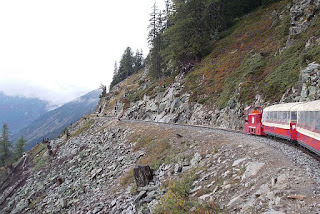 |
| Aerial view of a recently discovered massive Mayan city in Guatemala (Ka'ana Resort) |
It's the
stuff of Indiana Jones couched in reality rather than fiction.
 |
| Maya discovery in Guatemala (Ka'ana Resort) |
Literally
overnight this newly-found 1,200-year-old pre-Colombian civilization has become
an archaeological game changer where scientists using laser scan technology
have unearthed a hidden network of cities connected by raised highways.
Many
researchers believe the discovery could rival the early cultures of Greece and China
As
Albert Yu-Min Lin, an engineer and explorer for "National
Geographic", put it, “This world was lost to the jungle, and what you
thought was this massively understood, studied civilization is all of a sudden
brand-new again.”
 |
| Rivers were once aquatic highways to civilization (Taylor) |
The
discovery was made not far from the already familiar temples of Tikal
 |
| Nature's camouflage at Lubaantun (Taylor) |
Excavations
at Lubaantun in Belize
Mayan
culture has long had a reputation for its sophisticated understanding of
agriculture, art and astronomy. Several years ago, the Mayan calendar became a
source of great interest when it was said to have predicted the end of the
world.
 |
| Ancient Mayan pyramid at Xunantanich in Belize (Taylor) |
The
speculation was later explained that the calendar probably represented the end
of one Mayan life cycle that was to be followed by a rebirth of a new civilization.
Today,
some researchers refer to the centuries from 250 A.D. to 900 as the Classic
Period of Mayan civilization.
 |
| Ka'ana Resort is offering a special package to explore Mayan ruins in Belize and Guatemala (Ka'ana Resort) |
For travelers
with an interest in Mayan culture in Guatemala and Belize, Ka'ana Resort is now
offering a four day experience which allows them the immerse themselves into
the forests and ruins of western Belize.
As
Wendell Berry once observed, "Nobody can discover the world for somebody
else." While "National Geographic" has opened the door for
exploration in Guatemala
 |
| Comfortable room at Ka'ana (Ka'ana Resort) |
Ka'ana
Resort is the inspiration of Fernando Paiz, one of Central
America 's best known preservationists of Mayan culture. Paiz is cofounder
of the Guatemalan nonprofit La Ruta Maya Foundation that funded much of the
research for the recent discovery.
During
the four day Maya experience at Ka'ana, guests enjoy walking tours through Tikal
 |
| Sign of the times (Taylor) |
One
excursion begins at Hanna's Stables situated on the 400 acre estate where an
archaeologist guides amorning horseback ride through the forests of Belize
Following
the tour, a picnic lunch on the shores of the Mopan River
 |
| Jungle hike into the forests of Belize to view the Tapir Mountain caves (Taylor) |
Another
outing includes a visit to the Tapir Mountain Nature Reserve to visit Actun
Tunichil Muknal, one of the most impressive caves of Belize
 |
| Mysterious eerie surroundings envelope caves filled with stalactites and stalagmites (Taylor) |
Stalactites
and stalagmites capture the imagination before you venture on to the major
interior cathedrals that containing ceramic relics and human remains from
ancient sacrificial ceremonies.
 |
| Skeletal remains of a lost civilization (Taylor) |
There is
also a day trip into Guatemala
to visit other lesser known Mayan ruins as well as a bird's eye view of Belize
Any
quality tour programs also offers samples of the local cuisine and Ka'ana
Resort serves up a variety of dishes in a delightful array of culinary settings.
 |
| Great pyramid at Xunantanich (Taylor) |
Many
guests enjoy breakfast in bed featuring green juice comprised of chaya, ginger,
pineapple, honey and lime all grown in the on-site organic garden. Homemade
granola and yogurt parfait filled with fruit from the local market round out a
typical breakfast.
Chaya,
or tree spinach, is known among locals as the superfood. With benefits similar
to spinach, chaya should be well cooked for 5 to 15 minutes before being eaten.
Chaya is frequently served with eggs and a side of fry jacks (deep fried dough
that is typically shaped as a square or a triangle).
 |
| Faces of Mayan descendants (Taylor) |
Always
popular with guests is dinner on the fire deck where a glowing fire crackles
under the stars and the sounds of the Belizean jungle.
 |
| Days end in Belize (Taylor) |
A favorite
dish is Dukunu comprised of corn similar to polenta served on a bed of arugula
with a side of Mennonite sausage.
Visitors
are often surprised to discover a thriving Mennonite community in Belize
 |
| Sculptures lost in time (Taylor) |
Rounding
out the itinerary are traditional Belizean cooking classes and the unique
abdominal massage that is a specialty of the spa.
Simply
put, you Ka'ana go wrong with a visit to Belize
and Guatemala











































